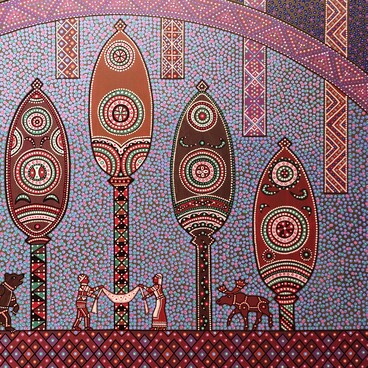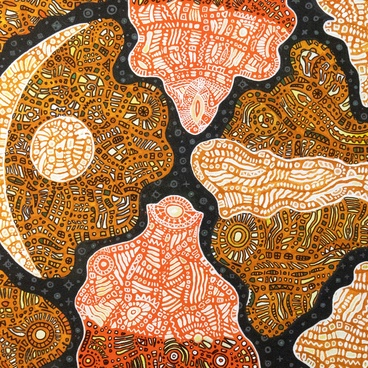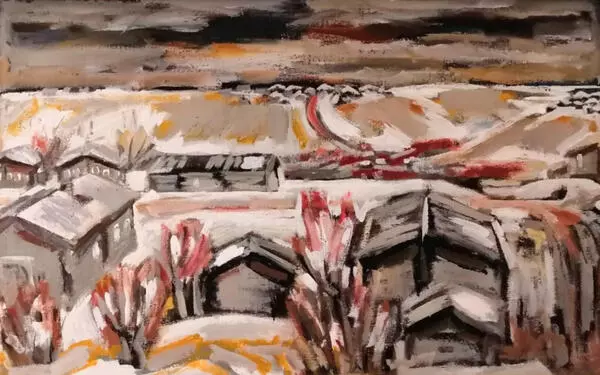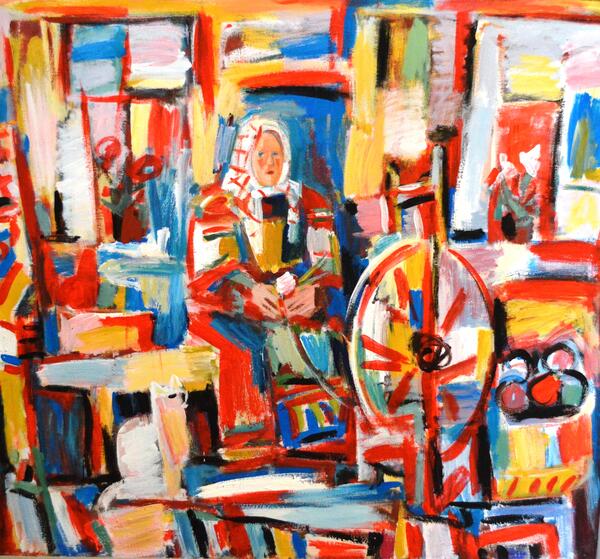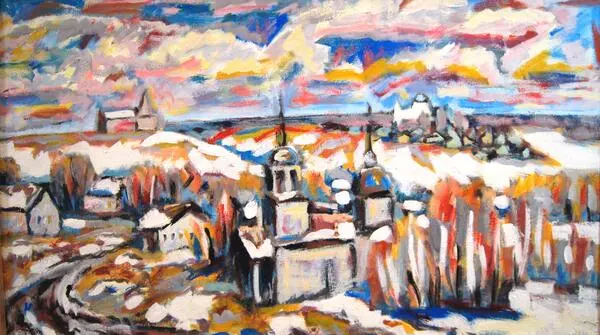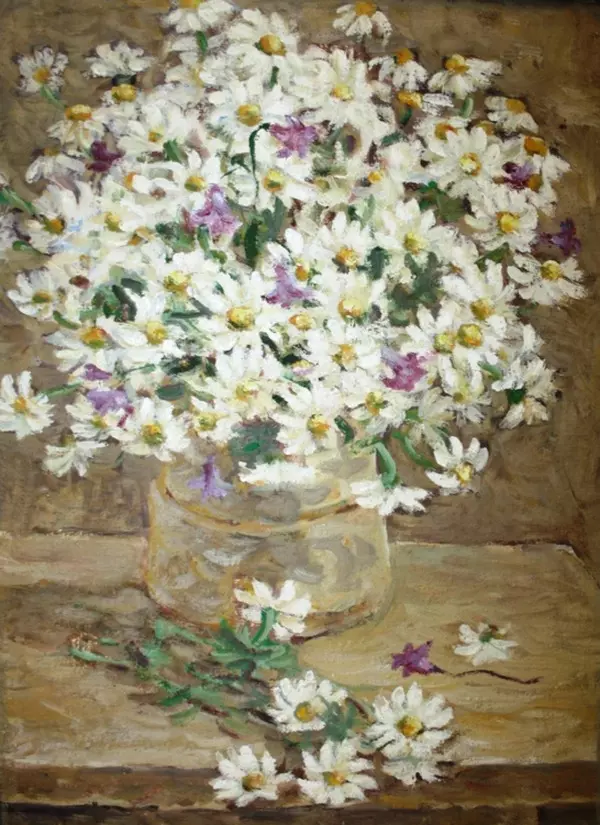In the Komi language, “Zarni An” means “the Golden Woman”. In various legends, this legendary idol is also called the Golden Hag. She was worshiped by the pagan peoples of Northeastern Europe and Northwestern Siberia. Statues of the Golden Woman were cast in silver and copper, carved in wood, and painted, with the word “golden” referring to the power of sunlight, and not the actual material of statues. The Golden Woman was offered sacrifices in pagan temples and was approached with requests and questions.
“Zarni An” is the centerpiece of a triptych by the artist Alexandra Kulikova. The artwork deals with the issues of age-old history and human consciousness. The two works flanking the centerpiece — “Call of the Ancestors” and “Echoes of the Millennia” — evoke a sense of olden times with the outlines of figures in the Perm animal style, clay figurines and masks, while the central part is dedicated to the female image. Its diffused character echoes the overall indistinctness of the two other parts of the triptych as if something beyond human consciousness has been externalized and spontaneously put on paper.
For the artist, the reference to cultural heritage is associated with the collective unconscious shared by humans and with the main archetype of a woman as a mother. It represents the history of human culture that emerged from the primitive or even savage foundations of tribal life and gradually developed into the modern family structure where the woman is the source of warmth, prosperity, and continuity.
In this interpretation, the legend of Zarni An becomes more of a worldview. Instead of simply dealing with a golden idol, it expresses the basic principle of human society. The triptych was created when Alexandra Kulikova turned to non-figurative art which helped her find a new interpretation of the ancient idol.
Based on the principles of abstraction and cubism, this image of Zarni An features the spiritual symbolism reflected in the woman’s countenance, the strength embodied by a truncated pyramid, the national spirit made up by the colorful patches, and the warmth evoked by the color palette.
Zarni An is a popular subject in Komi art. There are dozens of interpretations of this image: from abstract shapes and colors to realistic portraits of a beautiful woman with traditional jewelry; from a granite statue of a mother lovingly keeping her child close to her chest to a girl of transcendent beauty. The Golden Woman is also mentioned in novels, short stories, and movies.
